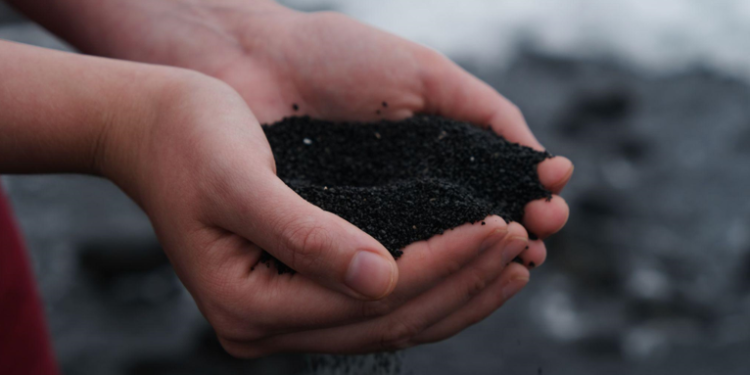Calcitic Lime is often used to reduce soil acidity and improve clay or sandy soil structures, thus increasing plant nutrient accessibility and productivity.
Agricultural lime can also help improve the health of pastures for livestock by encouraging beneficial microorganism growth and increasing magnesium levels in soils that lack this mineral. However, its use should only be considered when magnesium deficiency exists in your soils.
These materials are used to help fortify soil nutritionally; therefore, it is important to know what your soil needs in order to help choose the right material.
How is Soil Tested For Nutrient Deficiencies?
Questions about soil testing for nutritional deficiencies arise frequently among both home gardeners and farmers. The answer lies within a simple solution — take a sample and send it off to a laboratory.
Note that soil tests only measure the available nutrients that plant roots can take up, which typically accounts for only around one-third of total soil nutrient content.
Unfavorable soil conditions like compaction, waterlogging, acidity and alkalinity greatly limit plant availability even though sufficient amounts may exist in organic matter or inorganic compounds in the soil. You can learn more about alkalinity by clicking the link.
An accurate soil test report will give you recommendations for lime or fertilizers and indicate whether your soil requires pH adjustment, replenishing of phosphorus or potassium or other amendments.
Soil tests can be taken at agricultural cooperatives, university labs or private laboratories – as well as DIY kits sold at hardware and gardening stores. Once you have your results, you’re ready to take the next step.
Calcium
Calcium (Ca) is one of 16 essential plant nutrients. It occurs naturally as limestone, marble, chalk coral and shells.
Calcitic Lime is widely used in applications ranging from steelmaking to agriculture as a fast-acting soil amendment that helps reduce acidity while simultaneously increasing root growth and plant availability of other nutrients.
High-calcium lime can be used as a building material, including making mortar, plaster and concrete. It also serves as an antiseptic agent in sewage sludge treatment plants. Quicklime can also be utilized in manufacturing steel as well as certain chemical reactions; due to its reactive properties it must be handled carefully to avoid chemical burns on skin or eyes.
When selecting liming products, it’s essential to consider both your soil type and what its test report indicates.
For instance, if your soil lacks magnesium, dolomitic lime will add both calcium and magnesium into the soil; additionally, quality calcitic lime has a neutralizing value greater than 100 percent compared with pure calcium carbonate.
Magnesium
Calcium and magnesium are both key ingredients of both calcitic and dolomitic lime, yet their abilities to increase soil pH levels differ significantly. You can click the link: https://www.rsc.org/magnesium to learn more about this element.
While both products can help raise acidity, increase nutrient availability and stimulate microbial activity in soil, ultimately selecting which one best meets your soil’s specific needs depends on several variables.
If your soil test reveals that magnesium levels in the soil are deficient, dolomitic lime should be the ideal choice. But for extremely dense clay soils that require higher amounts of magnesium to reduce compaction, then calcitic lime might be more appropriate.
Both calcitic and dolomite lime can be applied quickly with bulk spreaders or irrigation systems to combat soil acidity, while both contain magnesium in their composition; for most soil conditions however, calcitic lime may be the superior option due to its faster reduction of acidity while having minimal impact on magnesium levels.
Soil pH
Calcitic lime can increase soil pH, increasing calcium availability while also stimulating beneficial micro-organism growth – an especially essential benefit in soils where acidity inhibits crop growth while leading to increased incidences of mosses, weeds and diseases.
Particle size of liming material also plays an integral role. Larger particles take more time to dissolve and reduce soil pH levels. Also, make sure to till in your treatment immediately following application; anything remaining on top won’t have the same positive impact.
Water Retention
Though both look similar, calcitic and dolomitic lime have different impacts on soil. Both are composed of ground limestone but contain different ratios of calcium to magnesium; with lime calcitic providing nearly no magnesium and being more effective at decreasing acidity than dolomitic lime. Neither type of material is right or wrong; they each have their own appropriate application.
Larger particles take more time for lime to dissolve in order to lower soil pH levels, as they require more water for activation; smaller particles react faster and improve soil conditions more rapidly.
If you need a quick-acting agricultural lime, calcitic lime may be your solution. Applicable using bulk spreaders, it provides numerous key benefits to plants, crops and the soil itself. However, if soil test results reveal low magnesium levels or you want to amend hard clay soils then dolomitic lime might be more suitable.


